Massage Equipment Size
Massage Equipment Market Growth Projections and Opportunities


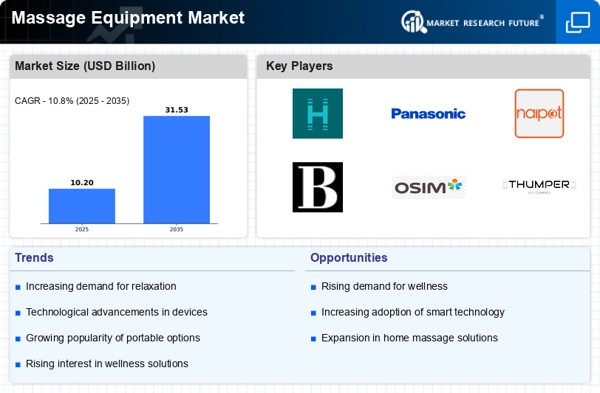

As per MRFR analysis, the Massage Equipment Market was estimated at 10.2 USD Billion in 2024. The Massage Equipment industry is projected to grow from 11.3 USD Billion in 2025 to 31.53 USD Billion by 2035, exhibiting a compound annual growth rate (CAGR) of 10.8 during the forecast period 2025 - 2035.
The Massage Equipment Market is experiencing robust growth driven by technological advancements and a rising focus on self-care.
| 2024 Market Size | 10.2 (USD Billion) |
| 2035 Market Size | 31.53 (USD Billion) |
| CAGR (2025 - 2035) | 10.8% |
| Largest Regional Market Share in 2024 | North America |
<p>HoMedics (US), Panasonic (JP), Naipo (CN), Inada (JP), Brookstone (US), OSIM (SG), Thumper (CA), Bodyfriend (KR), Kahuna (US)</p>
The Massage Equipment Market is currently experiencing a notable evolution, driven by a growing awareness of health and wellness among consumers. This shift is reflected in the increasing demand for various types of massage devices, which are perceived as essential tools for relaxation and recovery. As individuals seek to alleviate stress and enhance their overall well-being, the market is witnessing a surge in innovative products designed to cater to diverse preferences. Furthermore, advancements in technology are playing a pivotal role in shaping the landscape of this market, with smart devices and app integration becoming more prevalent. In addition to technological advancements, the Massage Equipment Market is also influenced by changing lifestyles and the rising popularity of self-care practices. Consumers are increasingly prioritizing personal health, leading to a greater acceptance of at-home massage solutions. This trend is further supported by the growing availability of online platforms, which facilitate easy access to a wide range of products. As the market continues to evolve, it appears poised for sustained growth, driven by a combination of consumer demand, technological innovation, and the ongoing emphasis on holistic health practices.
The Massage Equipment Market is witnessing a trend towards the incorporation of advanced technology in massage devices. Smart features, such as app connectivity and personalized settings, enhance user experience and cater to individual preferences. This integration not only improves functionality but also appeals to tech-savvy consumers seeking modern solutions for relaxation.
There is a growing emphasis on self-care among consumers, leading to a heightened interest in massage equipment. Individuals are increasingly recognizing the importance of mental and physical well-being, prompting them to invest in at-home massage solutions. This trend reflects a broader cultural shift towards prioritizing personal health and wellness.
The Massage Equipment Market is characterized by a wide array of products designed to meet varying consumer needs. From handheld devices to full-body massage chairs, the diversity in offerings allows consumers to select options that align with their specific preferences and lifestyles. This variety enhances market appeal and encourages exploration of different massage modalities.
The increasing focus on wellness and self-care is driving a notable rise in the demand for massage equipment, reflecting a broader societal shift towards holistic health practices.
The demographic shift towards an aging population is a critical driver for the Massage Equipment Market. As individuals age, they often experience various musculoskeletal issues, leading to an increased demand for therapeutic massage solutions. Data suggests that the population aged 65 and older is projected to double in the next few decades, creating a substantial market for massage equipment designed to address age-related ailments. This demographic is likely to seek out products that provide relief from chronic pain and enhance mobility. Consequently, the Massage Equipment Market is expected to expand significantly, catering to the needs of older adults who prioritize health and wellness.
The rise of e-commerce platforms is reshaping the retail landscape for the Massage Equipment Market. Consumers are increasingly turning to online shopping for convenience and a wider selection of products. E-commerce allows for easy comparison of prices and features, which is particularly appealing in a market with diverse offerings. Recent statistics indicate that online sales of massage equipment have surged, contributing to an overall market growth rate of approximately 9% annually. This trend is likely to continue, as more consumers prefer the ease of purchasing massage equipment from the comfort of their homes. The Massage Equipment Market must adapt to this shift by enhancing online presence and optimizing customer experience.
There is a discernible increase in health awareness among consumers, which is significantly influencing the Massage Equipment Market. As individuals become more conscious of their physical and mental well-being, the demand for massage equipment is likely to rise. Reports indicate that a substantial portion of the population is seeking alternative therapies to alleviate stress and improve overall health. This shift towards preventive healthcare is expected to drive the market, with an estimated growth of around 7% in the coming years. The Massage Equipment Market is thus positioned to benefit from this trend, as consumers increasingly view massage as an essential component of their wellness routines.
The Massage Equipment Market is experiencing a notable transformation due to rapid technological advancements. Innovations such as smart massage devices equipped with artificial intelligence and app connectivity are becoming increasingly prevalent. These devices allow users to customize their massage experiences, track their health metrics, and receive personalized recommendations. According to recent data, the integration of technology in massage equipment has led to a projected growth rate of approximately 8% annually. This trend not only enhances user satisfaction but also attracts a tech-savvy demographic, thereby expanding the market's consumer base. As technology continues to evolve, it is likely that the Massage Equipment Market will see further innovations that cater to the growing demand for personalized wellness solutions.
The rise in disposable income across various regions is positively impacting the Massage Equipment Market. As consumers have more financial resources at their disposal, they are more inclined to invest in wellness products, including massage equipment. This trend is particularly evident in emerging markets, where economic growth is leading to higher spending on health and wellness. Market analysis indicates that the demand for premium massage products is on the rise, with consumers willing to pay a premium for quality and effectiveness. This increase in disposable income is likely to drive the Massage Equipment Market forward, as more individuals prioritize self-care and invest in their health.
<p>The Massage Equipment Market shows a clear segmentation between Electric and Non Electric types. Electric massage equipment holds a significant market share, appealing to consumers seeking convenience and advanced features. They are the preferred choice for both personal and professional use, accounting for a majority of sales and growing steadily as technology advances. In contrast, Non Electric massage equipment is gaining traction rapidly, particularly among users who prefer traditional methods or those seeking cost-effective solutions, thus attracting a more diverse consumer base.</p>
<p>Massage Equipment: Electric (Dominant) vs. Non Electric (Emerging)</p>
<p>Electric massage equipment is characterized by its advanced features, enhanced settings, and ease of use. It caters to a tech-savvy audience looking for efficient and customizable relaxation solutions. These products often incorporate various functionalities, such as heat settings and adjustable intensity, appealing to both individual users and professional settings like spas and clinics. On the other hand, Non Electric massage equipment represents a more traditional approach to muscle relief and stress reduction. Lightweight, portable, and often more affordable, these products have rekindled interest among consumers who value simplicity and effectiveness. As a result, while Electric remains the dominant player, Non Electric equipment is emerging as an attractive alternative, particularly for the budget-conscious segment.</p>
<p>In the Massage Equipment Market, Back and Body Massagers hold the largest market share due to their widespread acceptance and usage. This segment has managed to capture the attention of consumers seeking relief from stress and muscle tension. Following this, Neck and Shoulder Massagers have emerged as a significant contender, gaining traction among consumers due to an increasing focus on targeted pain relief and convenience, indicating a shift in consumer preference towards portable massage solutions.</p>
<p>Back and Body Massagers (Dominant) vs. Neck and Shoulder Massagers (Emerging)</p>
<p>Back and Body Massagers are synonymous with traditional relaxation and therapeutic practices, making up the dominant part of the massage equipment market. Their versatility in use and the ability to cater to various body areas enhance their appeal. In contrast, Neck and Shoulder Massagers are rapidly emerging due to the growing demand for convenience and targeted relief options. These products, often compact and easy to use, cater to busy lifestyles, driving their popularity among consumers looking for quick and effective solutions to muscle tension, especially in urban settings.</p>
<p>In the Massage Equipment Market, the distribution between residential and commercial end users reveals significant trends. The residential segment holds the largest market share, driven by increased consumer interest in wellness and self-care practices at home. As individuals prioritize personal health and relaxation, there is a growing variety of massage equipment options available for home use, appealing to a wide range of demographics. Conversely, the commercial segment is witnessing rapid growth, attributed to heightened demand in spas, wellness centers, and fitness facilities. This segment's emphasis on professional-grade equipment is shaping its expansion.</p>
<p>Residential (Dominant) vs. Commercial (Emerging)</p>
<p>The residential segment of the Massage Equipment Market is characterized by its dominant position, fueled by a shift in consumer behavior towards self-care and wellness. This segment offers a variety of options, from portable massage chairs to electric massagers, catering to different consumer needs and preferences. In contrast, the commercial segment is emerging, driven by increased investment in wellness facilities and a surge in spa culture. While residential users seek out convenience and comfort, commercial entities focus on customer experience and quality, leading to a concentrated effort on acquiring advanced and professional-grade massage equipment. The dynamic nature of both segments showcases diverse consumer demands, shaping future market trends.</p>
<p>The Massage Equipment Market is characterized by a competitive distribution landscape, with sales primarily occurring through a variety of channels. The Online Sales Channel has emerged as the largest segment, benefiting from the rising consumer preference for online shopping and the convenience it offers. This has allowed online platforms to capture a significant share of the market, providing customers with easy access to a wider range of products and brands. Conversely, Specialty Stores have started gaining traction among consumers looking for personalized experiences and expert advice regarding massage equipment. These stores are carving out a space in the market, offering unique product selections that cater to specific customer needs.</p>
<p>Online Sales Channel (Dominant) vs. Specialty Store (Emerging)</p>
<p>The Online Sales Channel stands out as a dominant force in the Massage Equipment Market, driven by the convenience of e-commerce and the availability of comprehensive product information. Customers appreciate the ability to compare various brands and features from the comfort of their homes, leading to increased sales in this segment. On the other hand, Specialty Stores are emerging as important players, appealing to health-conscious consumers and those seeking specialized products. These stores often provide tailored services and expert recommendations, fostering consumer loyalty. As the trend toward personalization grows, Specialty Stores are likely to see continued growth, although they may still be overshadowed by the expansive reach of Online Sales.</p>
North America is the largest market for massage equipment, holding approximately 40% of the global share. The growth is driven by increasing health awareness, rising disposable incomes, and a growing trend towards wellness and self-care. Regulatory support for health and wellness products further catalyzes market expansion, with consumers increasingly seeking therapeutic solutions for stress relief and muscle recovery. The United States and Canada are the leading countries in this region, with a competitive landscape featuring key players like HoMedics, Brookstone, and Thumper. The presence of established brands and innovative product offerings enhances market dynamics. The demand for portable and smart massage devices is on the rise, reflecting changing consumer preferences towards convenience and technology integration.
Europe is the second-largest market for massage equipment, accounting for approximately 30% of the global market share. The region's growth is fueled by increasing health consciousness among consumers, a rise in lifestyle-related health issues, and supportive regulations promoting wellness. Countries like Germany and the UK are leading the market, with a growing demand for both professional and home-use massage devices. Germany, the UK, and France are key players in this market, with a competitive landscape that includes brands like OSIM and Inada. The European market is characterized by a mix of established companies and emerging startups focusing on innovative and eco-friendly products. The trend towards holistic health solutions is driving the demand for advanced massage equipment, enhancing the overall market potential.
Asia-Pacific is witnessing rapid growth in the massage equipment market, holding approximately 25% of the global share. The region's expansion is driven by increasing urbanization, rising disposable incomes, and a growing awareness of health and wellness. Countries like China and Japan are at the forefront, with a significant demand for both traditional and modern massage solutions, supported by favorable government policies promoting health and wellness initiatives. China is the largest market in the region, with a competitive landscape featuring local brands like Naipo and international players such as Panasonic. The market is characterized by a diverse range of products, from traditional massage chairs to innovative handheld devices. The increasing popularity of wellness centers and spas further boosts demand, making Asia-Pacific a key player in The Massage Equipment.
The Middle East and Africa region is emerging as a potential market for massage equipment, currently holding about 5% of the global share. The growth is driven by increasing disposable incomes, a rising interest in health and wellness, and the expansion of the fitness industry. Countries like the UAE and South Africa are leading the way, with a growing number of wellness centers and spas catering to consumer demand for relaxation and recovery solutions. The competitive landscape is still developing, with both local and international brands vying for market share. Key players are beginning to establish a presence, focusing on innovative products that cater to the unique preferences of consumers in this region. The increasing awareness of the benefits of massage therapy is expected to drive further growth in the coming years, making this region a promising market for investment.
The Massage Equipment Market is currently characterized by a dynamic competitive landscape, driven by increasing consumer awareness regarding health and wellness, alongside a growing demand for at-home therapeutic solutions. Key players such as HoMedics (US), Panasonic (Japan), and Inada (Japan) are strategically positioning themselves through innovation and regional expansion. HoMedics (US) focuses on enhancing user experience through advanced technology integration, while Panasonic (Japan) emphasizes product diversification and sustainability in its offerings. Inada (Japan) leverages its reputation for high-quality massage chairs, targeting premium segments. Collectively, these strategies contribute to a moderately fragmented market structure, where competition is intensifying as companies seek to differentiate themselves through unique value propositions.
In terms of business tactics, companies are increasingly localizing manufacturing to reduce costs and enhance supply chain efficiency. This approach not only mitigates risks associated with The Massage Equipment demands. The competitive structure of the Massage Equipment Market remains moderately fragmented, with several key players exerting influence over market dynamics. The collective actions of these companies indicate a trend towards consolidation, as they seek to enhance their market share and operational capabilities.
In August 2025, HoMedics (US) launched a new line of smart massage devices that utilize AI technology to personalize user experiences. This strategic move is significant as it aligns with the growing trend of digitalization in the wellness sector, potentially attracting tech-savvy consumers looking for tailored solutions. The integration of AI not only enhances user satisfaction but also positions HoMedics (US) as a leader in innovation within the market.
In September 2025, Panasonic (Japan) announced a partnership with a leading health technology firm to develop a new range of massage equipment that incorporates biometric feedback. This collaboration is noteworthy as it reflects a strategic shift towards integrating health monitoring features into massage devices, thereby appealing to health-conscious consumers. Such partnerships may enhance Panasonic's competitive edge by offering products that address broader wellness needs.
In July 2025, Inada (Japan) expanded its distribution network in Europe by partnering with local retailers, thereby increasing its market presence. This strategic expansion is crucial as it allows Inada (Japan) to tap into the growing European market for premium massage equipment, which is characterized by a rising demand for high-quality wellness products. By enhancing its distribution capabilities, Inada (Japan) is likely to strengthen its competitive position in the region.
As of October 2025, the Massage Equipment Market is witnessing trends such as digitalization, sustainability, and the integration of AI technologies. These trends are reshaping competitive dynamics, with companies increasingly forming strategic alliances to enhance their product offerings and market reach. The shift from price-based competition to a focus on innovation and technology is evident, as companies strive to differentiate themselves through unique features and reliable supply chains. Looking ahead, competitive differentiation will likely evolve further, emphasizing the importance of technological advancements and sustainable practices in shaping consumer preferences.
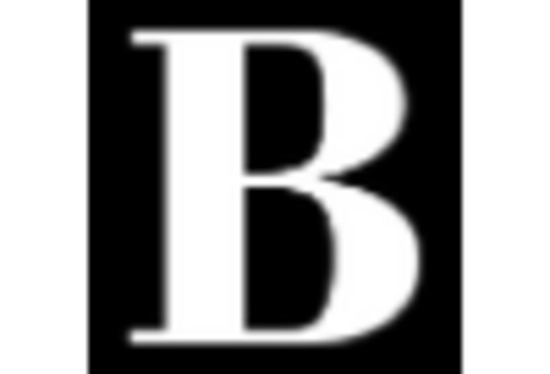

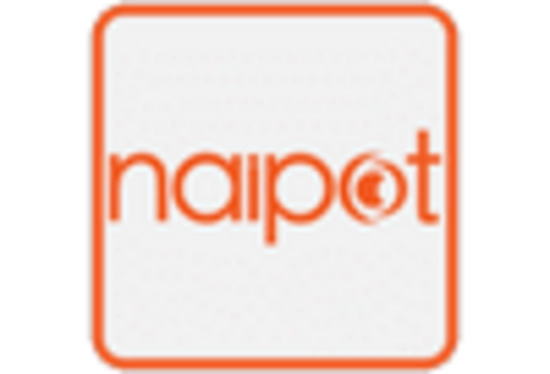
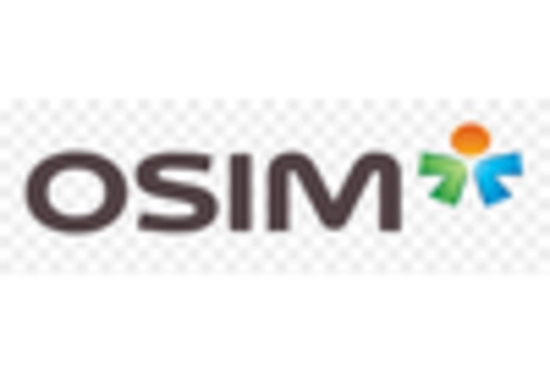
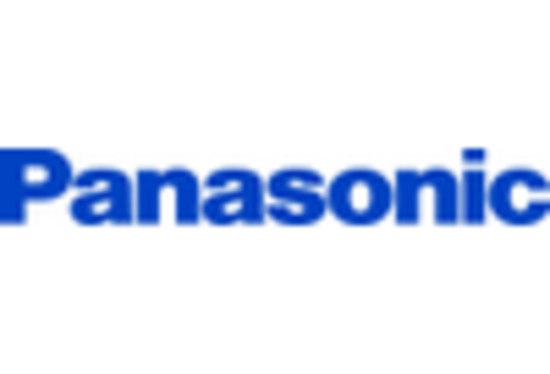
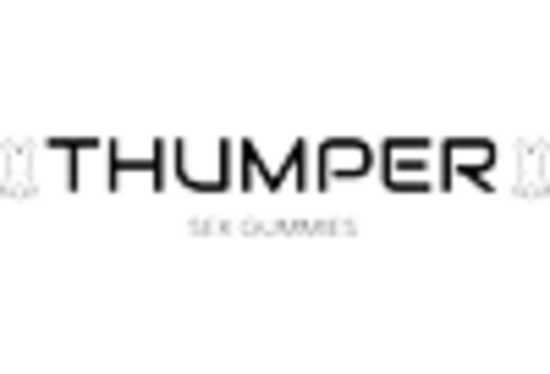
<p>The Massage Equipment Market is projected to grow at a 10.8% CAGR from 2024 to 2035, driven by increasing consumer wellness awareness and technological advancements.</p>
New opportunities lie in:
<p>By 2035, the market is poised for robust growth, reflecting evolving consumer preferences and innovative product developments.</p>
| MARKET SIZE 2024 | 10.2(USD Billion) |
| MARKET SIZE 2025 | 11.3(USD Billion) |
| MARKET SIZE 2035 | 31.53(USD Billion) |
| COMPOUND ANNUAL GROWTH RATE (CAGR) | 10.8% (2024 - 2035) |
| REPORT COVERAGE | Revenue Forecast, Competitive Landscape, Growth Factors, and Trends |
| BASE YEAR | 2024 |
| Market Forecast Period | 2025 - 2035 |
| Historical Data | 2019 - 2024 |
| Market Forecast Units | USD Billion |
| Key Companies Profiled | Market analysis in progress |
| Segments Covered | Market segmentation analysis in progress |
| Key Market Opportunities | Integration of smart technology in Massage Equipment Market enhances user experience and personalization. |
| Key Market Dynamics | Rising consumer demand for wellness products drives innovation and competition in the massage equipment sector. |
| Countries Covered | North America, Europe, APAC, South America, MEA |
This is a great article! Really helped me understand the topic better.
Thanks for sharing this. I’ve bookmarked it for later reference.
What is the current valuation of the Massage Equipment Market as of 2024?
The Massage Equipment Market was valued at 10.2 USD Billion in 2024.
What is the projected market size for the Massage Equipment Market by 2035?
The market is projected to reach 31.53 USD Billion by 2035.
What is the expected CAGR for the Massage Equipment Market during the forecast period 2025 - 2035?
The expected CAGR for the Massage Equipment Market during 2025 - 2035 is 10.8%.
Which segment of the Massage Equipment Market had the highest valuation in 2024?
In 2024, the Electric segment had a valuation of 6.12 USD Billion.
What are the key product categories within the Massage Equipment Market?
Key product categories include Back and Body Massagers, Leg and Foot Massagers, and Neck and Shoulder Massagers.
How does the distribution channel impact the Massage Equipment Market?
The Online Sales Channel is projected to grow from 4.08 USD Billion in 2024 to 12.24 USD Billion by 2035.
Germany Outlook (USD Billion, 2018-2032)

Kindly complete the form below to receive a free sample of this Report
“I am very pleased with how market segments have been defined in a relevant way for my purposes (such as "Portable Freezers & refrigerators" and "last-mile"). In general the report is well structured. Thanks very much for your efforts.”
Leave a Comment